
Weird Tales is an American fantasy and horror fiction pulp magazine founded by J. C. Henneberger and J. M. Lansinger in late 1922. The first issue, dated March 1923, appeared on newsstands February 18. The first editor, Edwin Baird, printed early work by H. P. Lovecraft, Seabury Quinn, and Clark Ashton Smith, all of whom went on to be popular writers, but within a year, the magazine was in financial trouble. Henneberger sold his interest in the publisher, Rural Publishing Corporation, to Lansinger, and refinanced Weird Tales, with Farnsworth Wright as the new editor. The first issue under Wright's control was dated November 1924. The magazine was more successful under Wright, and despite occasional financial setbacks, it prospered over the next 15 years. Under Wright's control, the magazine lived up to its subtitle, "The Unique Magazine", and published a wide range of unusual fiction.
Publication of comic strips and comic books focusing on science fiction became increasingly common during the early 1930s in newspapers published in the United States. They have since spread to many countries around the world.

Unknown was an American pulp fantasy fiction magazine, published from 1939 to 1943 by Street & Smith, and edited by John W. Campbell. Unknown was a companion to Street & Smith's science fiction pulp, Astounding Science Fiction, which was also edited by Campbell at the time; many authors and illustrators contributed to both magazines. The leading fantasy magazine in the 1930s was Weird Tales, which focused on shock and horror. Campbell wanted to publish a fantasy magazine with more finesse and humor than Weird Tales, and put his plans into action when Eric Frank Russell sent him the manuscript of his novel Sinister Barrier, about aliens who own the human race. Unknown's first issue appeared in March 1939; in addition to Sinister Barrier, it included H. L. Gold's "Trouble With Water", a humorous fantasy about a New Yorker who meets a water gnome. Gold's story was the first of many in Unknown to combine commonplace reality with the fantastic.

Frederick Orlin Tremaine was an American science fiction magazine editor, most notably of the influential Astounding Stories. He edited a number of other magazines, headed several publishing companies, and sporadically wrote fiction.
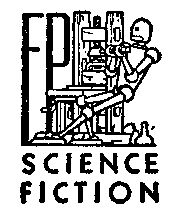
Fantasy Press was an American publishing house specialising in fantasy and science fiction titles. Established in 1946 by Lloyd Arthur Eshbach in Reading, Pennsylvania, it was most notable for publishing the works of authors such as Robert A. Heinlein and E. E. Smith. One of its more notable offerings was the Lensman series.

Gertrude Barrows Bennett, known by the pseudonym Francis Stevens, was a pioneering American author of fantasy and science fiction. Bennett wrote a number of fantasies between 1917 and 1923 and has been called "the woman who invented dark fantasy".

Triplanetary is a science fiction novel and space opera by American writer E. E. Smith. It was first serialized in the magazine Amazing Stories in 1934. After the original four novels of the Lensman series were published, Smith expanded and reworked Triplanetary into the first of two prequels for the series. The fix-up novel Triplanetary was published in book form in 1948 by Fantasy Press. The second prequel, First Lensman, was a new original novel published in 1950 by Fantasy Press.

Equality; or, A History of Lithconia is a utopian fantasy novel. It is the first American utopian novel. The author is unknown, though Donald H. Tuck speculates that it could be Dr. James Reynolds, a zealous liberal crusader. The novel was originally serialized in 8 parts in the weekly newspaper, The Temple of Reason, beginning in 1802. It was first published in book form by the Liberal Union in 1837.

The Torch is a science fiction novel by author Jack Bechdolt. It was first published in book form in 1948 by Prime Press in an edition of 3,000 copies. The novel was originally serialized in the magazine Argosy in January 1920. It has recently been reprinted by Steeger Books in their "Argosy Library" series in 2019

The Checklist of Fantastic Literature is a bibliography of English science fiction, fantasy and weird books compiled and edited by Everett F. Bleiler with a preface by Melvin Korshak and a cover by Hannes Bok.
Fantasy Publishing Company, Inc., or FPCI, was an American science fiction and fantasy small press specialty publishing company established in 1946. It was the fourth small press company founded by William L. Crawford.
William Levi Crawford was an American publisher and editor.
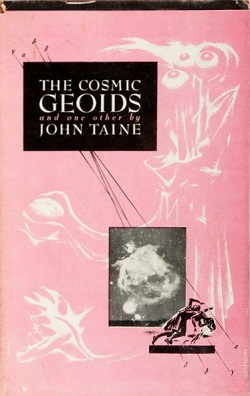
The Cosmic Geoids and One Other is a collection of two science fiction novellas by author John Taine. It was first published in 1949 by Fantasy Publishing Company, Inc. in an edition of 1,200 copies. The title novella is a loose sequel to Taine's novel, The Time Stream, and was later serialized in the magazine Spaceway, in three parts beginning in December 1954. The other novella, "Black Goldfish", was first serialized in the magazine Fantasy Book, in two parts beginning in 1948.

Drome is a fantasy novel written and illustrated by John Martin Leahy. Originally serialized in the magazine Weird Tales in five parts beginning January 1927, it was first published in book form in 1952 by Fantasy Publishing Company, Inc. in an edition of 1,000 copies.

Garan the Eternal is a collection of science fiction short fiction by American writer Andre Norton. It was first published in a hardcover edition of 1,300 copies by Fantasy Publishing Company, Inc. in December 1972. The first paperback edition was issued by DAW Books in March 1973, and was reprinted in July 1975, December 1978, June 1985, and September 1987.]

The Port of Peril is a science fiction novel by American writer Otis Adelbert Kline. It was first published in book form in 1949 by The Grandon Company in an edition of 3,000 copies. The novel was originally serialized in six parts in the magazine Weird Tales beginning in November 1932 under the title Buccaneers of Venus.
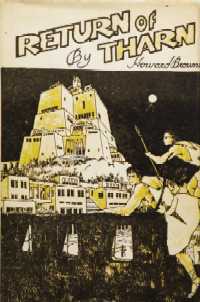
The Return of Tharn is a fantasy novel by American writer Howard Browne. It was first published in book form in 1956 by The Grandon Company in an edition of 500 copies, although 150 of the copies were lost to flood damage and perhaps another 150 show some water damage.
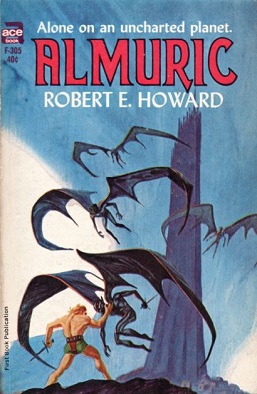
Almuric is a science fiction novel by American writer Robert E. Howard. It was originally serialized in three parts in the magazine Weird Tales beginning in May 1939. The novel was first published in book form in 1964 by Ace Books.
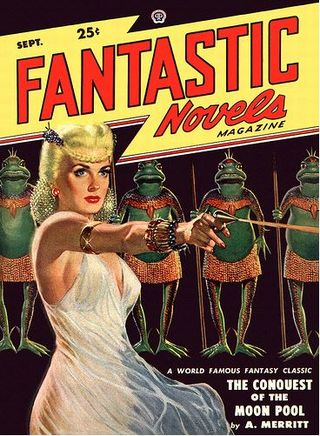
Fantastic Novels was an American science fiction and fantasy pulp magazine published by the Munsey Company of New York from 1940 to 1941, and again by Popular Publications, also of New York, from 1948 to 1951. It was a companion to Famous Fantastic Mysteries. Like that magazine, it mostly reprinted science fiction and fantasy classics from earlier decades, such as novels by A. Merritt, George Allan England, and Victor Rousseau, though it occasionally published reprints of more recent work, such as Earth's Last Citadel, by Henry Kuttner and C. L. Moore.

Science-fiction and fantasy magazines began to be published in the United States in the 1920s. Stories with science-fiction themes had been appearing for decades in pulp magazines such as Argosy, but there were no magazines that specialized in a single genre until 1915, when Street & Smith, one of the major pulp publishers, brought out Detective Story Magazine. The first magazine to focus solely on fantasy and horror was Weird Tales, which was launched in 1923, and established itself as the leading weird fiction magazine over the next two decades; writers such as H.P. Lovecraft, Clark Ashton Smith and Robert E. Howard became regular contributors. In 1926 Weird Tales was joined by Amazing Stories, published by Hugo Gernsback; Amazing printed only science fiction, and no fantasy. Gernsback included a letter column in Amazing Stories, and this led to the creation of organized science-fiction fandom, as fans contacted each other using the addresses published with the letters. Gernsback wanted the fiction he printed to be scientifically accurate, and educational, as well as entertaining, but found it difficult to obtain stories that met his goals; he printed "The Moon Pool" by Abraham Merritt in 1927, despite it being completely unscientific. Gernsback lost control of Amazing Stories in 1929, but quickly started several new magazines. Wonder Stories, one of Gernsback's titles, was edited by David Lasser, who worked to improve the quality of the fiction he received. Another early competitor was Astounding Stories of Super-Science, which appeared in 1930, edited by Harry Bates, but Bates printed only the most basic adventure stories with minimal scientific content, and little of the material from his era is now remembered.
















